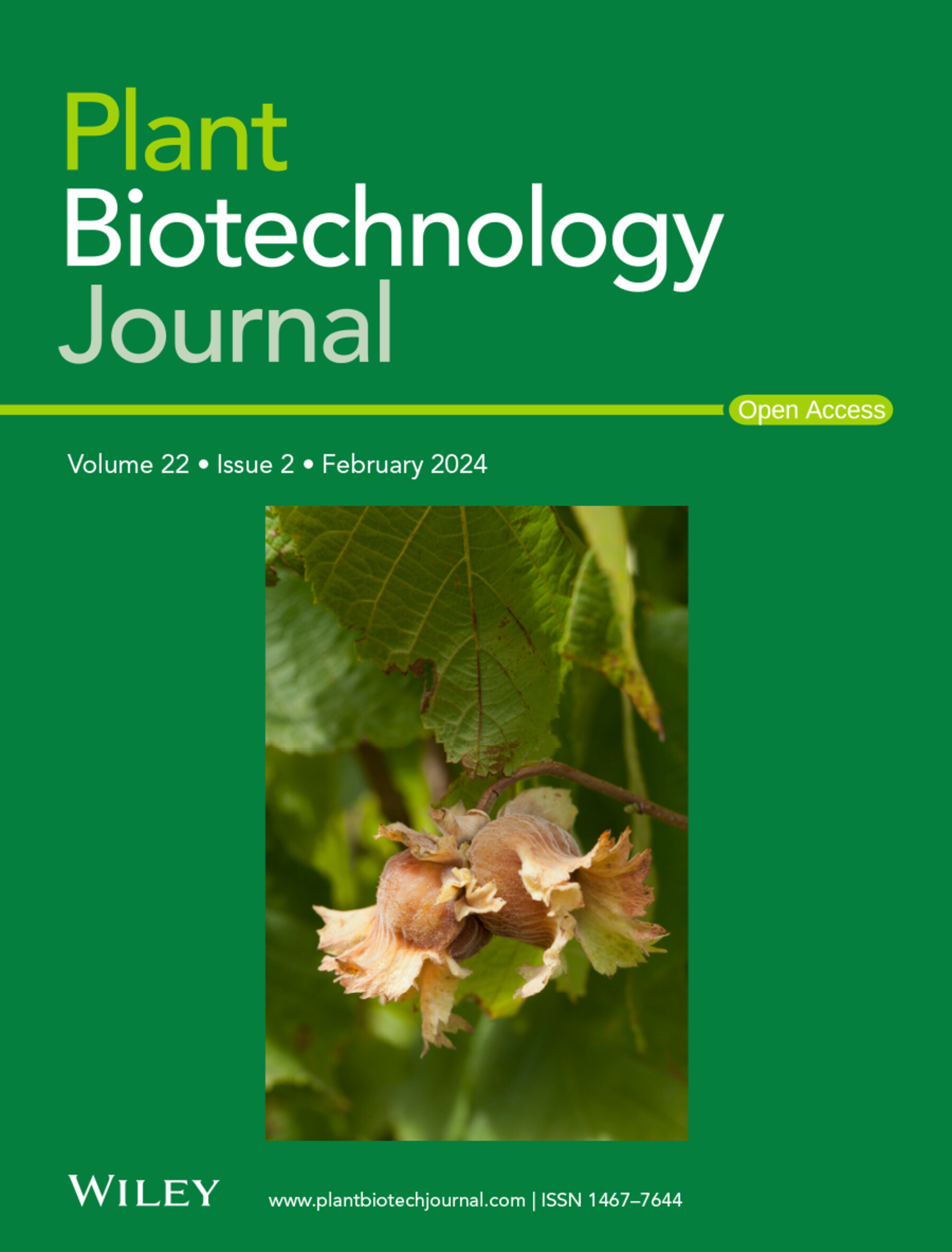综合多组学方法揭示了毛蒿中天冬Scoparone的生物合成机制。
IF 10.5
1区 生物学
Q1 BIOTECHNOLOGY & APPLIED MICROBIOLOGY
引用次数: 0
摘要
毛毛蒿是一种传统的中国药用植物,几千年来一直在治疗黄疸、肝脏炎症和胆囊炎方面显示出良好的效果。然而,毛缕草的主要活性成分天scoparone的生物合成机制尚不清楚。本文首次建立了毛缕草的全长转录组学和综合代谢组学数据集。随后提出了一个几乎完整的天scoparone生物合成途径图。值得注意的是,一种新的o -甲基转移酶AcOMT1,它催化东莨菪素和异东莨菪素的甲基化,作为东莨菪酮生物合成的最后一步,使用加权基因相关网络、系统发育分析、亚细胞定位分析和酶分析进行了注释和表征。分子对接和动力学模拟表明,与异东莨菪内酯相比,AcOMT1对东莨菪内酯具有更强、更稳定的亲和力,这解释了其对东莨菪内酯甲基化的更高效率和偏好。最终,我们通过共表达AcOMT1,以及在烟叶中负责东莨菪内素生物合成的关键基因,开发了一个产率为3.03 μg的东莨菪内素生物合成系统。G-1干重。本研究不仅提供了对天冬scoparone生物合成途径的全面认识,而且通过合成生物学和代谢工程为毛缕草生产天冬scoparone提供了新的途径。本文章由计算机程序翻译,如有差异,请以英文原文为准。
A Comprehensive Multiomics Approach Illuminates the Biosynthetic Mechanism of Scoparone in Artemisia capillaris.
Artemisia capillaris, a traditional Chinese medicinal plant, has displayed favourable effects in the treatment of jaundice, inflammation of the liver and cholecystitis for thousands of years. However, the biosynthesis of scoparone, the major active component in A. capillaris, remains unclear. Here, a full-length transcriptomic and integrated metabolomic dataset of A. capillaris was generated for the first time. A nearly complete map of the biosynthesis pathway of scoparone was subsequently proposed. Notably, a novel O-methyltransferase, AcOMT1, which catalyses the methylation of scopoletin and isoscopoletin as the final step in the biosynthesis of scoparone, was annotated and characterised using a weighted gene correlation network, phylogenetic analysis, subcellular localisation analysis and enzyme assays. Molecular docking and dynamics simulations demonstrated that AcOMT1 has a stronger and more stable affinity for scopoletin than for isoscopoletin, explaining its greater efficiency and preference for the methylation of scopoletin. Ultimately, by coexpressing AcOMT1, along with the crucial genes responsible for scopoletin biosynthesis in Nicotiana benthamiana, we developed a system for scoparone biosynthesis, yielding 3.03 μg.g-1 dry weight. This study provides not only a comprehensive understanding of the biosynthetic pathway of scoparone but also new avenues for scoparone production in A. capillaris via synthetic biology and metabolic engineering.
求助全文
通过发布文献求助,成功后即可免费获取论文全文。
去求助
来源期刊

Plant Biotechnology Journal
生物-生物工程与应用微生物
CiteScore
20.50
自引率
2.90%
发文量
201
审稿时长
1 months
期刊介绍:
Plant Biotechnology Journal aspires to publish original research and insightful reviews of high impact, authored by prominent researchers in applied plant science. The journal places a special emphasis on molecular plant sciences and their practical applications through plant biotechnology. Our goal is to establish a platform for showcasing significant advances in the field, encompassing curiosity-driven studies with potential applications, strategic research in plant biotechnology, scientific analysis of crucial issues for the beneficial utilization of plant sciences, and assessments of the performance of plant biotechnology products in practical applications.
 求助内容:
求助内容: 应助结果提醒方式:
应助结果提醒方式:


